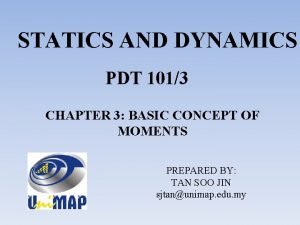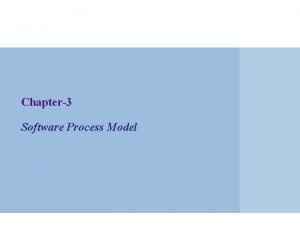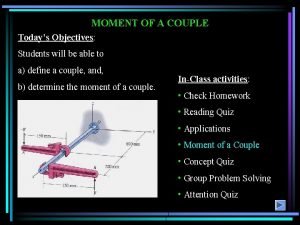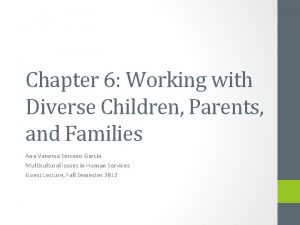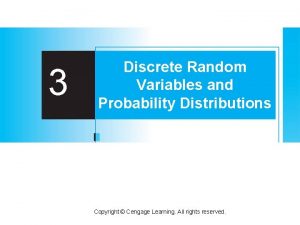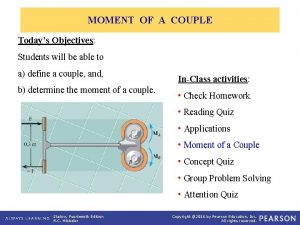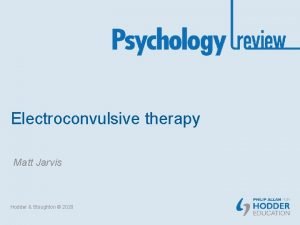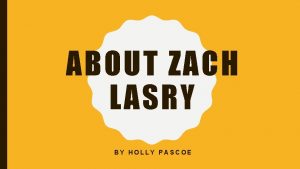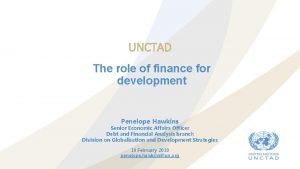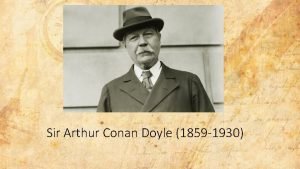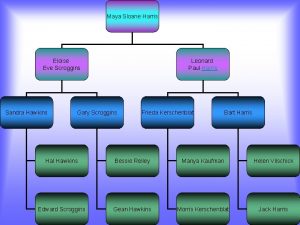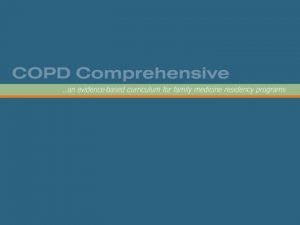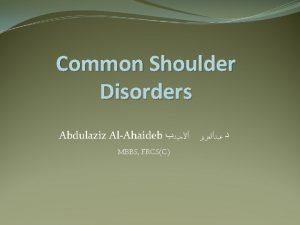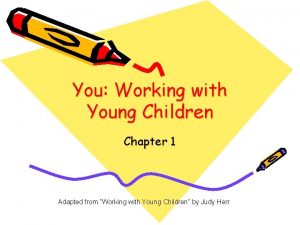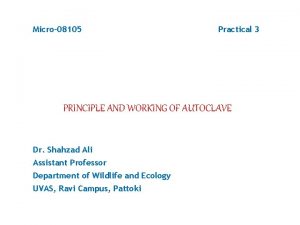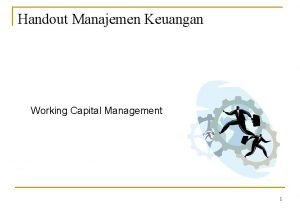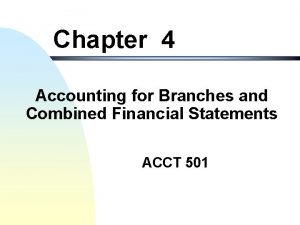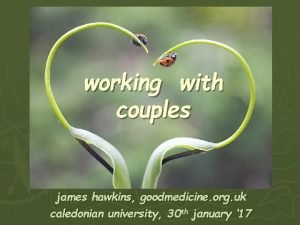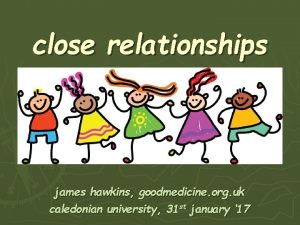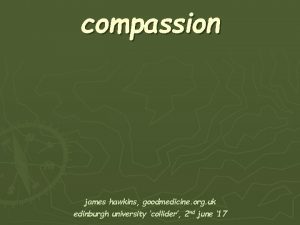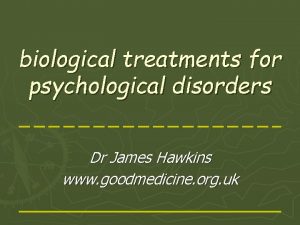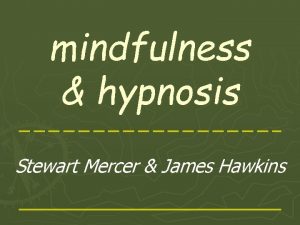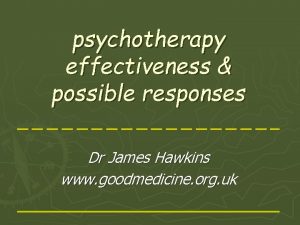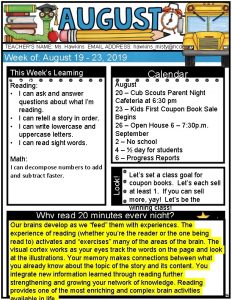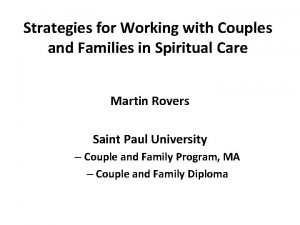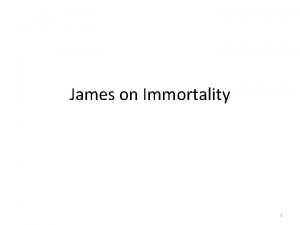working with couples james hawkins goodmedicine org uk


















































- Slides: 50

working with couples james hawkins, goodmedicine. org. uk glasgow caledonian, 28 th january ‘ 19

areas we aim to explore Ø prevalence of distress & effectiveness of treatment Ø partner augmentation individual therapy of Ø different couple therapies & five key treatment targets Ø relevance of working well with conflict, attachment, & psychosexual difficulties Ø routine outcome monitoring & what questionnaires to use Ø central importance of the ‘double’ therapeutic alliance

activities: planned exercises 1) planned program for the day & personal 2) 3) 4) 5) 6) 7) 8) areas we want to cover reflection: prevalence, suffering, costs, & forms of couple therapies conflict: neutral, compassionate observer reappraisal training conflict: ibct DEEP understanding and ibct/eft exploring for emotions sexual words brainstorm, reflection & relevance to psychotherapy sexual distress: therapy role play alliance ruptures: identification & responding constructively reflection on day & what’s most relevant professionally/personally

my general hopes for today: that you will all leave with … a better sense of the ‘amount of distress’ suffered by couples & the potential need for good couple therapy ► some knowledge of the main types of evidence-based couple therapy & how efficacious/effective they are ► more clarity about how to track progress in therapy ► an emphasis on the key importance of the ‘double’ therapeutic alliance & how you might work with this ► exploration of some areas that are often important in couple therapy – conflict, attachment & sexual issues ► activity 1: what personal hopes do you have for today?

areas we aim to explore Ø prevalence of distress & effectiveness of treatment Ø partner augmentation individual therapy of Ø different couple therapies & five key treatment targets Ø routine outcome monitoring & what questionnaires to use Ø central importance of the ‘double’ therapeutic alliance Ø relevance of working well with conflict, attachment, & psychosexual difficulties

separation & divorce in the UK 42% of marriages end in divorce – this reduced rate seems due to increasing age at marriage & increasing rates of cohabitation by 10 th anniversary of moving in together, about 40% of cohabiting couples will have separated while about 50% will have married having children or remaining childless has no clear effect on the risk of getting divorced 66% of divorces are on the wife’s petition chance of getting divorced is over 3% each year between 4 th & 8 th wedding anniversaries 1 in 4 divorces now in people aged over 50

the effects on children in 2010 -11, 47% of 16 year olds were not living with both their parents – and this was true for a third of all children under 16 the ‘millenium cohort study’ found at age 11, children not living with both parents had 2 to 3 x the rate of emotional & behavioural problems – due to a complex mix of factors including poverty, education, & family conflict the ‘relationships foundation’ reported the UK was 3 rd worst amongst 27 European countries on a overall 25 component “family pressure gauge” (e. g. financial & work pressures, etc)

the economics of separation decrease in needs-adjusted income (allowing for relevant background factors) following divorce is about 7% for men & 24% for women relationships foundation 2015 report found the cost of family breakdown is now £ 47 billion (& rising) – costing each taxpayer £ 1, 546 annually this is equivalent to half the national education budget and is greater than the defence budget these costs (in decreasing order) are made up of tax & benefits, health & social care, civil & criminal justice, housing, and education Relate “Factsheet: Separation and Divorce. A Summary of Statistics for the UK” Available online with research references; last updated December 2013

to separate or to stay? Whisman, M. A. , et al. (2008). "Is marital discord taxonic & can taxonic status be assessed reliably? Results from a national, representative sample of married couples. " J Consult Clin Psychol 76(5): 745 -755. In summary, results obtained using well-validated indicators based on a multiscale measure of relationship functioning in a large, national repre-sentative sample suggest that marital discord is taxonic with a base rate of. 31 in the general population of married couples. Bourassa, K. J. , et al. (2015). "Women in very low quality marriages gain life satisfaction following divorce. " J Fam Psychol 29(3): 490 -499. Divorced women evidenced a negative association between marital quality and later LS, whereas continuously married women had a positive association between marital quality and later LS. In addition, women in higher quality marriages that become divorced showed the lowest LS, and women in lowest quality marriages show the highest LS among women with similar levels of marital quality. There was no association between marital quality and later LS for divorced or continuously married men.

kendler et al life event research ü ü 1, 082 pairs of female twins questioned about previous year average of these subjects was 30. 1 years old stressful life events and onset of major depression noted 9 events primarily involving the subject and 22 events primarily involving, or interacting with, someone in their social network were recorded ü events most associated with subsequent depression onset in the next month are shown in the graph ü those at lowest genetic risk of depression (co-monozygotic twin not depressed), probability of depression onset in next month was 0. 5% with no severe event, and 6. 2% with event ü figures for those at highest genetic risk were 1. 1% & 14. 6% Kendler KS, Kessler RC, Walters EE et al Stressful life events, genetic liability, and onset of an episode of major depression in women Am J Psychiatry 1995; 152: 832 -42

increased chance depression onset major money problem serious illness of close relative loss of confidant job loss serious conflict close relative serious problem in marriage divorce or break-up assault death of close relative 0 5 10 15 20 increased onset of major depression in month after significant life event compared with those suffering no such significant life events

individual distress & couple distress individual distress couple distress criticism, rejection cumulative annoyance ‘unfair’ demands negativity, over-sensitivity misinterpretation, hope-lessness, powerlessness chicken and egg?

couple therapy helpfulness ² Lebow, J. L. , et al. (2012). "Research on the Treatment of Couple Distress. " J Marital Fam Ther 38(1): 145168. This article reviews the research on couple therapy over the last decade. The research shows that couple therapy positively impacts 70% of couples receiving treatment. The effectiveness rates of couple therapy are comparable to the effectiveness rates of individual therapies & vastly superior to control groups not receiving treatment. The relationship between couple distress & individual disorders such as depression & anxiety has become well established over the past decade. Research also indicates that couple therapy clearly has an important role in the treatment of many disorders. Findings over the decade have been especially promising for integrative behavioral couples therapy and emotion-focused therapy, which are two evidence-based treatments for couples. Research has also begun to identify moderators and mediators of change in couple therapy. Finally, a new and exciting line of research has focused on delineating the principles of change in couple therapy that transcends approach. ² Halford, W. K. , et al. (2015). "The Gap Between Couple Therapy Research Efficacy and Practice Effectiveness. " J Marital Fam Ther: n/a-n/a. Meta-analyses of randomized controlled trials of couple therapy find large improvements in couple adjustment, but published evaluations of the effectiveness of couple therapy in routine practice find only small-to-moderate effects. The current study analyzes possible explanations for the research-efficacy to practice-effectiveness gap and offers suggestions for enhancing couple therapy effectiveness. Major recommendations are that therapists should clarify whether couples’ therapy goal is to clarify commitment to the relationship or to improve the relationship; use standardized assessment of the individual partners and the relationship; and use systematic monitoring of therapy progress and therapeutic alliance. It is also possible that the greater use of evidence-based therapies when treating couple relationship distress could enhance couple therapy outcome.

areas we aim to explore ü prevalence of distress & effectiveness of treatment Ø partner augmentation individual therapy of Ø different couple therapies & five key treatment targets Ø routine outcome monitoring & what questionnaires to use Ø central importance of the ‘double’ therapeutic alliance Ø relevance of attachment, psychosexual difficulties & working well with conflict

partner added to 1: 1 therapy partner present for focused couple work middle ground work on client problem but also untangling associated partner difficulties partner present as ‘therapy assistant’ ² Baucom, D. H. , et al. (2014). "Couple-based interventions for psychopathology: a renewed direction for the field. " Fam Process 53(3): 445 -461 ² Kirby, J. S. , et al. (2015). "Couple-Based Interventions for Adults With Eating Disorders. " Eat Disord 23(4): 356 -365 ² Schumm, J. A. , et al. (2014). "A randomized clinical trial of behavioral couples therapy versus individually based treatment for women with alcohol dependence. ” J Consult Clin Psychol 82(6): 993 -1004 ² Abramowitz, J. S. , et al. (2013). "Enhancing exposure and response prevention for OCD: A couple-based approach. " Behav Modif 37(2): 189 -210 ² Monson, C. M. , et al. (2012). "Effect of cognitive-behavioral couple therapy for PTSD: A randomized controlled trial. " JAMA 308(7): 700 -709 ² Shimazu, K. , et al. (2011). "Family psychoeducation for major depression: randomised controlled trial. " British Journal of Psychiatry 198(5): 385 -390 ² Cohen, S. , et al. (2010). "A randomized clinical trial of a brief, problem-focused couple therapy for depression. " Behavior Therapy 41(4): 433 -446 ² Mc. Crady, B. S. , et al. (2009). "A randomized trial of individual and couple behavioral alcohol treatment for women. " J Consult Clin Psychol 77: 243 -256

activity 2: how are we doing? what has particularly struck you hearing these ‘facts and figures’ about the difficulties and costs associated with couple distress, the ‘chicken and egg’ of individual problems & couple dysfunction, and the encouraging but cautious research results on the help-fulness of couple therapy?

areas we aim to explore ü prevalence of distress & effectiveness of treatment ü partner augmentation individual therapy of Ø different couple therapies & five key treatment targets Ø routine outcome monitoring & what questionnaires to use Ø central importance of the ‘double’ therapeutic alliance Ø relevance of attachment, psychosexual difficulties & working well with conflict

effectiveness of treatment ü variety of evidence-based treatments: bct, ibct, efct, ü all these evidence-based therapies seem to produce roughly comparable outcomes ü effect size in clinical trials (efficacy) is around 0. 8 – similar to individual therapy ü effect size in clinical practice (effectiveness) seems considerably worse than this In God’s kitchen

% clinically significantly improved integrative v’s traditional 75 70 d=0. 9 71 65 69 IBCT 60 55 60 59 d=0. 7 TBCT 50 50 46 45 pre/post 2 year 5 year ² Christensen, A. , et al. (2004). "Traditional versus integrative behavioral couple therapy for significantly and chronically distressed married couples. " J Consult Clin Psychol 72(2): 176 -191. ² Christensen, A. , et al. (2006). "Couple and individual adjustment for 2 years following a randomized clinical trial comparing traditional versus integrative behavioral couple therapy. " J Consult Clin Psychol 74(6): 1180 -1191 ² Christensen, A. , et al. (2010). "Marital status and satisfaction five years following a randomized clinical trial comparing traditional versus integrative behavioral couple therapy. " J Consult Clin Psychol 78(2): 225 -235.

five principles of couples work Andrew Christensen ‘A unified ‘protocol for couple therapy’ emphasize strengths & grow positive behaviours modify emotion-driven maladaptive interactions reasons for initial attraction to each other; assess & feedback strengths; encouragement of positive behaviour; learning from successful interactions; vulnerability behind demands & hostility therapists may highlight & interrupt these patterns in session; at home, ‘time-outs’, mental contrasting & implementation intentions can all have a part to play note importance of identifying & changing couples’ key distressproducing causeeffect chains shared, non-blaming dyadic, understanding cooperatively arrived at DEEP ‘reappraisal’: may involve an understanding that both partners are trying to meet valid needs but that how they’re doing this is unhelpfully coloured by their pasts D: Differences E: Emotional sensitivities E: External circumstances P: Patterns of communication develop more adaptive communication skills ‘elephants’: problemsolving and intimacy helping speakers become more ‘self-focused’ (less blaming of others, more disclosing own emotions & vulnerability); helping listeners become more ‘other focused’ (body language, standing ‘in the other’s shoes’, summarizing) at the right time, it’s likely to be important to open up about any of a variety of potentially important avoided ‘elephant in the room’ topics; this can allow constructive joint problem-solving & deepen understanding & closeness

shared, non-blaming, dyadic model Andrew Christensen ‘A unified protocol for couple therapy’ note importance of identifying & changing couples’ key distressproducing causeeffect chains emphasize strengths & grow positive behaviours modify emotion-driven maladaptive interactions reasons for initial attraction to each other; assess & feedback strengths; encouragement of positive behaviour; learning from successful interactions; vulnerability behind demands & hostility therapists may highlight & interrupt these patterns in session; at home, ‘time-outs’, mental contrasting & implementation intentions can all have a part to play shared, non-blaming dyadic, understanding cooperatively arrived at DEEP ‘reappraisal’: may involve an understanding that both partners are trying to meet valid needs but that how they’re doing this is unhelpfully coloured by their pasts develop more adaptive communication skills ‘elephants’: problem- solving and intimacy helping speakers become more ‘self-focused’ (less blaming of others, more disclosing own emotions & vulnerability); helping listeners become more ‘other focused’ (body language, standing ‘in the other’s shoes’, summarizing) at the right time, it’s likely to be important to open up about any of a variety of potentially important avoided ‘elephant in the room’ topics; this can allow constructive joint problem-solving & deepen understanding & closeness D: Differences E: Emotional sensitivities E: External circumstances P: Patterns of communication

integrative behavioural couple therapy: 3 overlapping interventions helpful non-blaming understanding inner: empathy & compassion deeper emotional connections improved practical strategies outer: time- outs, communic-ation skills, etc both inner & outer change interventions

activities: planned exercises ü planned program for the day & personal areas we want to cover ü reflection: prevalence, suffering, costs, & forms of couple therapies 3) conflict: neutral, compassionate observer reappraisal training 4) conflict: ibct DEEP understanding and ibct/eft exploring for emotions 5) sexual words brainstorm, reflection & relevance to psychotherapy 6) sexual distress: therapy role play 7) alliance ruptures: identification & responding constructively 8) reflection on day & what’s most relevant professionally/personally

activity 3: conflict reappraisal v jennifer crocker’s work at ohio state university highlights the negative personal & social outcomes of selfentitlement v jim mcnulty’s work at university of florida highlights that when there are significant relationship problems, ‘conflict’ may well be associated with better outcomes Ø describe a conflict from the point of Finkel, E. J, Slotter, E. B. , et al. "A brief intervention to promote conflict reappraisal preserves marital quality over time. " Psychol Sci 2013; 24: 1595 -1601 view of a neutral, compass-ionate observer (see ‘startlingly effective’ handout) and what useful might they suggest could come from the conflict?

activity 4: responding to conflict a) describe the conflict from the point of view of a neutral, compassionate observer (see ‘startlingly effective’ handout) & what useful might they suggest could come from the conflict? Finkel, E. J. , E. B. Slotter, et al. (2013). "A brief intervention to promote conflict reappraisal preserves marital quality over time. " Psychol Sci 24(8): 1595 -1601 b) similar neutral, compassionate observer description of the conflict, but now using a mutually developed DEEP explanation (Differences, Emotional sensitivities, External circumstances, & Patterns of communication) c) both IBCT & EFT therapists look for underlying (soft) primary emotions, ‘marinate’, explore links and ask about needs; partners too may be very moved by this Christensen, A. , Doss, B. D. & Jacobson, N. S. (2014). ”Reconcilable differences (2 nd ed. )” New York: Guilford Press Johnson, S. M. (1996) “The practice of emotionally focused marital therapy: creating connection” Brunner/Mazel

areas we aim to explore ü prevalence of distress & effectiveness of treatment ü partner augmentation individual therapy of ü different couple therapies & five key treatment targets Ø relevance of attachment, psychosexual difficulties & working well with conflict Ø routine outcome monitoring & what questionnaires to use Ø central importance of the ‘double’ therapeutic alliance

interesting recent sex research ² Maxwell, J. A. , et al. (2017). "How implicit theories of sexuality shape sexual and relationship well-being. " J Pers Soc Psychol 112(2): 238 -279. ² Debrot, A. , et al. (2017). "More than just sex: affection mediates the association between sexual activity and well-being. " Pers Soc. Psychol Bulletin 43(3): 287 -299. ² Arnocky, S. , et al. (2017). "Altruism predicts mating success in humans. " British Journal of Psychology 108(2): 416 -435. ² Vaillancourt-Morel, M. -P. , et al. (2016). "Adult sexual outcomes of child sexual abuse vary according to relationship status. " J Marital Fam Ther 42(2): 341 -356. ² Twenge, J. M. , et al. (2016). "Changes in American adults' reported same-sex sexual experiences and attitudes, 1973 -2014. " Arch Sex Behav 45(7): 1713 -1730. ² Lammers, J. and R. Imhoff (2016). "Power and sadomasochism: understanding the antecedents of a knotty relationship. " Soc Psychol Personal Science 7(2): 142 -148. ² Pachankis, J. E. , et al. (2015). "The mental health of sexual minority adults in and out of the closet: A population-based study. " J Consult Clin Psychol 83(5): 890 -901 ² Muise, A. , et al. (2015). "Sexual frequency predicts greater well-being, but more is not always better. " Social psychological and personality ² Joyal, C. C. , et al. (2015). "What exactly Is an unusual sexual fantasy? " The Journal of Sexual Medicine 12(2): 328 -340 ² Johnson, M. D. , et al. (2015). "Skip the dishes? Not so fast! Sex and housework revisited. " J Fam Psychol ² Adam, F. , et al. (2015). "Mindfulness skills are associated with female orgasm? " Sexual and Relationship Therapy 30(2): 256 -267 ² Muise, A. , et al. (2014). "Post Sex Affectionate Exchanges Promote Sexual and Relationship Satisfaction. " Archives of Sexual Behavior 43(7): 1391 -1402

sexual fantasies ² internet survey was conducted with 1, 516 adults (53% women) ² stated 85% heterosexual; 3. 6% homosexual; 11. 4% bisexual ² recruited via adverts, radio & news-paper articles, facebook, lectures, university institutional publicity ² ranked 55 different sexual fantasies (SF) and wrote their own favorite SF ² each SF was rated as statistically rare (2. 3% or less), unusual (<16%), common (>50%), or typical (>84. 1% of the sample). ² only 2 SF were rare, 9 were unusual, 30 Joyal, C. C. , et al. (2015). "What exactly Is an unusual sexual fantasy? ” SF were common for one or both Journal of Sexual Medicine 12(2): 328 genders, and 5 were typical. 340 ² intensity 1 to 7; frequency of 3 to 7

sexual fantasies - examples item presence/ intensity (f) intensity (m) in unusual place (e. g. office, toilets) 82%/4. 8 83%/4. 8 with someone known/not spouse 66%/3. 9 83%/5. 2 sex with two women 37%/2. 2 85%/5. 3 with > three people (both men & women) 56%/3. 3 16%/1. 0 openly in a public place 57%/3. 3 66%/3. 7 being dominated sexually 65%/3. 8 53%/3. 0 dominating someone sexually 47%/2. 7 60%/3. 3 being tied up by someone for sex 52%/3. 0 46%/2. 7 tying someone up for sex 42%/2. 4 48%/2. 9 anal sex 33%/1. 8 64%/3. 7 spanked or whipped for sexual pleasure 36%/2. 1 28%/1. 7 sex with an animal 3%/0. 2 2. 2%/0. 2 0. 8%/0. 5 1. 8%/0. 1 sex with child under age of 12

paraphilias intense sexual attraction to objects or people outside of genital stimulation with consenting adult partners. it is considered a disorder when the paraphilia is causing distress or threatens to harm someone else. paraphilias can include exhibitionism, voyeurism, frotteurism (rubbing against), pedophilia, transvestism, and other involvements, for example with urine, enemas & obscene phone calls.

activity 5: sex and language a) group brainstorm – how many words/phrases can we think of to describe sexual parts of the body and sexual behaviours? b) personal reflection – what thoughts & feelings did this exercise bring up in us & how do we feel this links to family upbringing, school, personal life experiences & social attitudes? c) small groups – what does this exercise suggest about possible challenges when we discuss sexual issues with our clients?

activity 6: psychosexual case possible case studies include. . . 1) older couple. . . lack of touch 1) shy teenager … being known & antidepressant 1) current couple. . . lack of sex, lack of emotional connection 1) any examples from your own practice or observation?

areas we aim to explore ü prevalence of distress & effectiveness of treatment ü partner augmentation individual therapy of ü different couple therapies & five key treatment targets ü relevance of attachment, psychosexual difficulties & working well with conflict Ø routine outcome monitoring & what questionnaires to use Ø central importance of the ‘double’ therapeutic alliance

using regular sessional feedback helps therapists improve outcomes M. Barkham, G. E. Hardy & J. Mellor-Clark (ed’s) (2010) “Developing and delivering practicebased evidence. ” Chichester: John Wiley & Sons. Newnham, E. A. and A. C. Page (2010). "Bridging the gap between best evidence and best practice in mental health. " Clin Psychol Rev 30(1): 127 -142. Shimokawa, K. , M. J. Lambert, et al. (2010). "Enhancing treatment outcome of patients at risk of treatment failure: Meta-analytic and mega-analytic review of a psychotherapy quality assurance system. " J Consult Clin Psychol 78(3): 298 -311. Lambert, M. J. (2010) "Prevention of treatment failure: the use of measuring, monitoring, and feedback in clinical practice". Washington: Am Psych Association Lutz, W. , J. R. Bohnke, et al. (2011). "Lending an ear to feedback systems: Evaluation of recovery and non-response in psychotherapy in a German outpatient setting. " Community Ment Health J 47(3): 311 -317. Whipple, J. L. and M. J. Lambert (2011). "Outcome measures for practice. " Annual review of clinical psychology 7: 87 -111. Carlier, I. V. , D. Meuldijk, et al. (2012). "Routine outcome monitoring & feedback on physical or mental health status: Evidence and theory. " J Eval Clin Pract 18: 104 -110.

bad at identifying deterioration ² 550 clients & 48 therapists (22 licensed, 26 trainees) ² told that 8% of clients would probably deteriorate & they were asked to identify them ² 40/550 (7. 3%) of clients actually deteriorated (OQ-45) ² actuarial feedback identified 36/40 – a 90% detection rate ² therapists identified 3, only 1 of whom actually deteriorated – a 2. 5% detection rate ² it was a trainee who was the only one who was accurate 40 30 20 40 36 10 0 1 thrpsts fdbck 2. 5% actual 90% Hannan, C. , M. J. Lambert, et al. (2005). "A lab test and algorithms for identifying clients at risk for treatment failure. " Journal of Clinical Psychology 61(2): 155 -163.

helping improve outcomes … especially when non-response risk “ … repeated assessment and immediate feed-back of a patient’s mental health functioning during the course of therapy can alert therapists to patient non-response or negative response, support decisions on treatment planning and strategies (e. g. when and how to repair thera-peutic alliance ruptures) and help determine when treatment has been sufficient. ” Castonguay, L. , M. Barkham, W. Lutz, et al. (2013). “Practice-orientated research. ” in M. J. Lambert (ed) “Handbook of psychotherapy and behavior change (6 th ed)”

to get best results from feedback ² best results typically depend on therapists involved being committed to using feedback ² regular sessional assessment of outcome progress & therapeutic alliance given to both therapist & client for possible discussion ² current evidence suggests this halves client deterioration rates ² there are encouraging increases in treatment gains as well - e. g. using pcoms, reliable improve-ment rates increase by 3. 5 x Castonguay, L. , M. Barkham, W. Lutz, et al. (2013). “Practice-orientated research. ” in M. J. Lambert (ed) “Handbook of psychotherapy and behavior change (6 th ed)”

lessons from the norway study Sparks, J. A. (2015). "The Norway Couple Project: Lessons Learned. " J Marital Fam Ther 41(4): 481 -494. Couple therapists in routine practice may find it difficult to apply findings from an increasingly expanding and complex body of couple therapy research. Meanwhile, concerns have been raised that competency in evidencebased treatments is insufficient to inform many practice decisions or ensure positive treatment outcomes (American Psychological Association Presidential Task Force on Evidence-Based Practice, American Psychologist, 2006, 271). This article aims to narrow the research/practice gap in couple therapy. Results from a large, randomized naturalistic couple trial (Anker, Duncan, & Sparks, Journal of Consulting and Clinical Psychology, 2009, 693) and four companion studies are translated into specific guidelines for routine, eclectic practice. Client feedback, therapeutic alliance, couple goals assessment, and therapist experience in couple therapy provide a research-informed template for improving couple therapy outcomes.

review at session 4? Pepping, C. A. , et al. (2015). "Can we predict failure in couple therapy early enough to enhance outcome? " Behaviour Research and Therapy 65(2): 60 -66. Feedback to therapists based on systematic monitoring of individual therapy progress reliably enhances therapy outcome. An implicit assumption of therapy progress feedback is that clients unlikely to benefit from therapy can be detected early enough in the course of therapy for corrective action to be taken. To explore the possibility of using feedback of therapy progress to enhance couple therapy outcome, the current study tested whether weekly therapy progress could detect off-track clients early in couple therapy. In an effectiveness trial of couple therapy, 136 couples were monitored weekly on relationship satisfaction and an expert derived algorithm was used to attempt to predict eventual therapy outcome. As expected, the algorithm detected a significant proportion of couples who did not benefit from couple therapy at Session 3, but prediction was substantially improved at Session 4 so that eventual outcome was accurately predicted for 70% of couples, with little improvement of prediction thereafter. More sophisticated algorithms might enhance prediction accuracy, and a trial of the effects of therapy progress feedback on couple therapy outcome is needed.

areas we aim to explore ü prevalence of distress & effectiveness of treatment ü partner augmentation individual therapy of ü different couple therapies & five key treatment targets ü relevance of attachment, psychosexual difficulties & working well with conflict ü routine outcome monitoring & what questionnaires to use Ø central importance of the ‘double’ therapeutic alliance

importance of therapeutic alliance Owen, J. , et al. (2014). "Accounting for therapist variability in couple therapy outcomes: what really matters? " J Sex Marital Ther 40(6): 488 -502. This study examined whetherapist gender, professional discipline, experience conducting couple therapy, and average second-session alliance score would account for the variance in outcomes attributed to therapist. The authors investigated therapist variability in couple therapy with 158 couples randomly assigned to and treated by 18 therapists in a naturalistic setting. Consistent with previous studies in individual therapy, in this study therapists accounted for 8. 0% of the variance in client outcomes and 10% of the variance in client alliance scores. Therapist average alliance score and experience conducting couple therapy were salient predictors of client outcomes attributed to therapist. In contrast, therapist gender and discipline did not significantly account for the variance in client outcomes attributed to therapists. Tests of incremental validity demonstrated that therapist average alliance score and therapist experience uniquely accounted for the variance in outcomes attributed to therapist. Emphasis on improving therapist alliance quality and specificity of therapist experience in couple therapy are discussed.

effect sizes with interpretations effect size: cohen’s d % of untreated controls below mean of treated % of variability in outcome due to treatment % success in those not treated % success in those treated 0. 0 50 50 0. 3 61. 8 2. 2 42. 6 57. 4 0. 5 69. 1 5. 9 37. 9 62. 1 0. 6 72. 6 8. 3 35. 6 64. 4 0. 7 75. 8 10. 9 33. 5 66. 5 0. 8 78. 8 13. 8 31. 4 68. 6 0. 9 81. 6 16. 8 29. 5 70. 5 1. 0 84. 1 20 27. 6 72. 4 medium large Lambert, M. J. (2013) “The effectiveness of psychotherapy” in M. J. Lambert (ed) “Handbook of psychotherapy and behavior change (6 th ed)” Wampold, B. E. (2001) “The great psychotherapy debate: models, methods & findings”

therapist effects Saxon, D. & M. Barkham (2012). "Patterns of therapist variability: Therapist effects & the contribution of patient severity and risk. " J Consult Clin Psychol 80(4): 535 -546.

differences in recovery rates research in UK NHS adult primary care counseling & psychological therapy services ² study of 119 therapists treating 10, 786 patients ² recovery used the standard Jacobson & Truax criteria: reliable change to below the clinical cut-off ² three groups of therapists found, comprising 19 poor (16%), 79 average (66%), and 21 excellent (18%) recovery rates 75. 6 80 58 70 60 50 43. 3 40 30 20 10 0 poor average excellent Saxon, D. & M. Barkham (2012). "Patterns of therapist variability: Therapist effects & the contribution of patient severity and risk. " J Consult Clin Psychol 80(4): 535 -546.

why therapist effects differences? research suggests that differences in therapist effectiveness are NOT due to: type of therapy being used therapist training and qualifications overall duration of therapist experience therapist age therapist gender Baldwin, S. A. and Z. E. Imel (2013). “Therapist effects: findings and methods” in M. J. Lambert (ed) “Handbook of psychotherapy and behavior change (6 th ed)”

activity 7: caring for the alliance case study. . . imagine work- ing with a couple where, as is often the case the man is uncertain about coming for therapy. . . on glancing at the SRS alliance scores 5 -10 min before the end of the session you see a couple of ‘ 7’s in his scoring: how do you respond?

areas we have explored today üprevalence of distress & effectiveness of treatment üpartner augmentation individual therapy of üdifferent couple therapies & five key treatment targets ürelevance of attachment, psychosexual difficulties & working well with conflict üroutine outcome monitoring what questionnaires to use & ücentral importance of the ‘double’ therapeutic alliance

my general hopes for today: that you will all leave with … üa better sense of the ‘amount of distress’ suffered by couples & the potential need for good couple therapy üsome knowledge of the main types of evidence-based couple therapy & how efficacious/effective they are üexploration of some areas that are often important in couple therapy – conflict, attachment & sexual issues ümore clarity about how to track progress in therapy üan emphasis on the key importance of the ‘double’ therapeutic alliance & how you might work with this how about your personal hopes for today?

activities: planned exercises ü planned program for the day & personal areas we want to cover ü reflection: prevalence, suffering, costs, & forms of couple therapies ü conflict: neutral, compassionate observer reappraisal training ü conflict: ibct DEEP understanding and ibct/eft exploring for emotions ü sexual words brainstorm, reflection & relevance to psychotherapy ü sexual distress: therapy role play ü alliance ruptures: identification & responding constructively 8) reflection on day & what’s most relevant professionally/personally

activity 8: reflection on day there is a reflection sheet in your handouts booklet: what has been most interesting & relevant for you today both personally & professionally? what do you want to do now, after this workshop … learning, exploring, trying out?
 Academic couples
Academic couples Statics couples
Statics couples Encounter centered couples therapy
Encounter centered couples therapy Couples in the great gatsby
Couples in the great gatsby 1013 chapter
1013 chapter Chapter3
Chapter3 The moment of a couple is called a sliding vector
The moment of a couple is called a sliding vector Bicultural couples tend to demonstrate extremes in
Bicultural couples tend to demonstrate extremes in A pediatrician wishes to recruit 5 couples
A pediatrician wishes to recruit 5 couples Facade pattern couples a subsystem from its clients
Facade pattern couples a subsystem from its clients A midsummer night's dream vocabulary act 2
A midsummer night's dream vocabulary act 2 Two couples act on the beam as shown.
Two couples act on the beam as shown. Stoughton couples therapy
Stoughton couples therapy Machining operations
Machining operations Pengerjaan panas dan dingin
Pengerjaan panas dan dingin Hard work or smart work
Hard work or smart work Hot working and cold working difference
Hot working and cold working difference Hot working vs cold working
Hot working vs cold working Ektansiyon
Ektansiyon Hawkins hombro
Hawkins hombro Neil pascoe
Neil pascoe Hugo hawkins
Hugo hawkins Karaindros development
Karaindros development Louisa hawkins
Louisa hawkins Diane hawkins
Diane hawkins Penny hawkins rspca
Penny hawkins rspca Duron shearn
Duron shearn Test du foulard épaule
Test du foulard épaule Jamison hawkins
Jamison hawkins Akromioplastika
Akromioplastika Mapa de la conciencia de david hawkins
Mapa de la conciencia de david hawkins Hawkins test
Hawkins test Sir arthur conan doyle biography
Sir arthur conan doyle biography Sandra hawkins
Sandra hawkins Hawkins test
Hawkins test Dr clare hawkins
Dr clare hawkins Neer and hawkins test
Neer and hawkins test Tahapan kreativitas tari dari alma hawkins
Tahapan kreativitas tari dari alma hawkins James russell odom
James russell odom James clayton lawson
James clayton lawson Gas turbine working principle
Gas turbine working principle Working with young children chapter 1
Working with young children chapter 1 Principle of autoclaving
Principle of autoclaving Working capital
Working capital Lone working meaning
Lone working meaning Net operating working capital formula
Net operating working capital formula Working capital management
Working capital management What is working capital in financial management
What is working capital in financial management Working principle of quadcopter
Working principle of quadcopter Working principle of stepper motor
Working principle of stepper motor Home office and branch accounting journal entries pdf
Home office and branch accounting journal entries pdf




